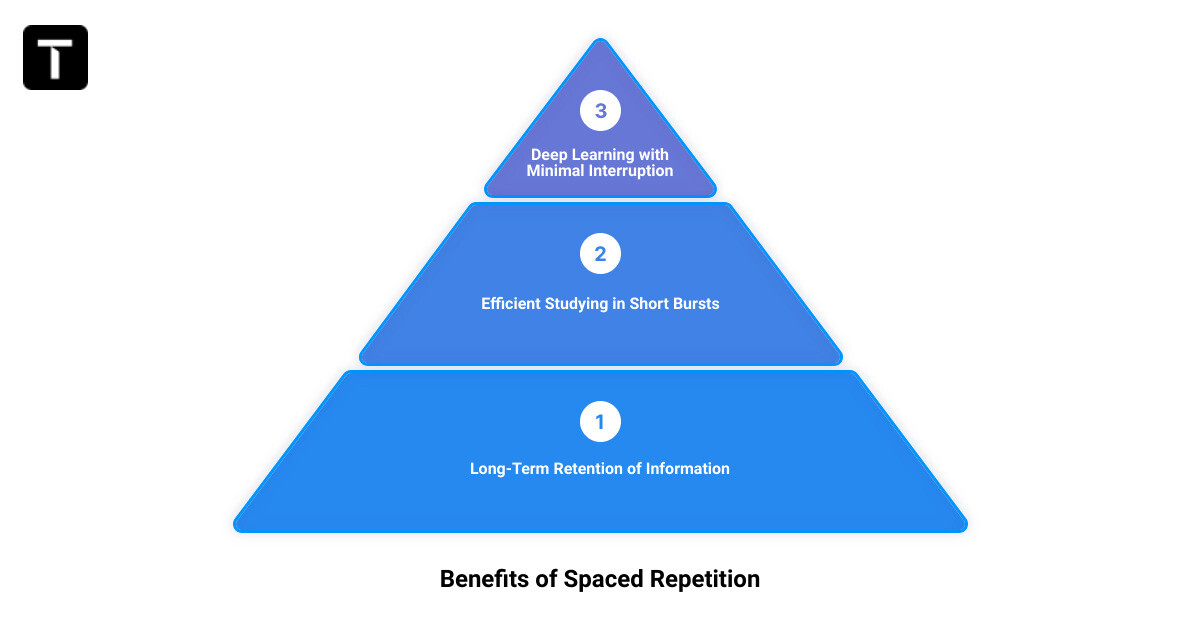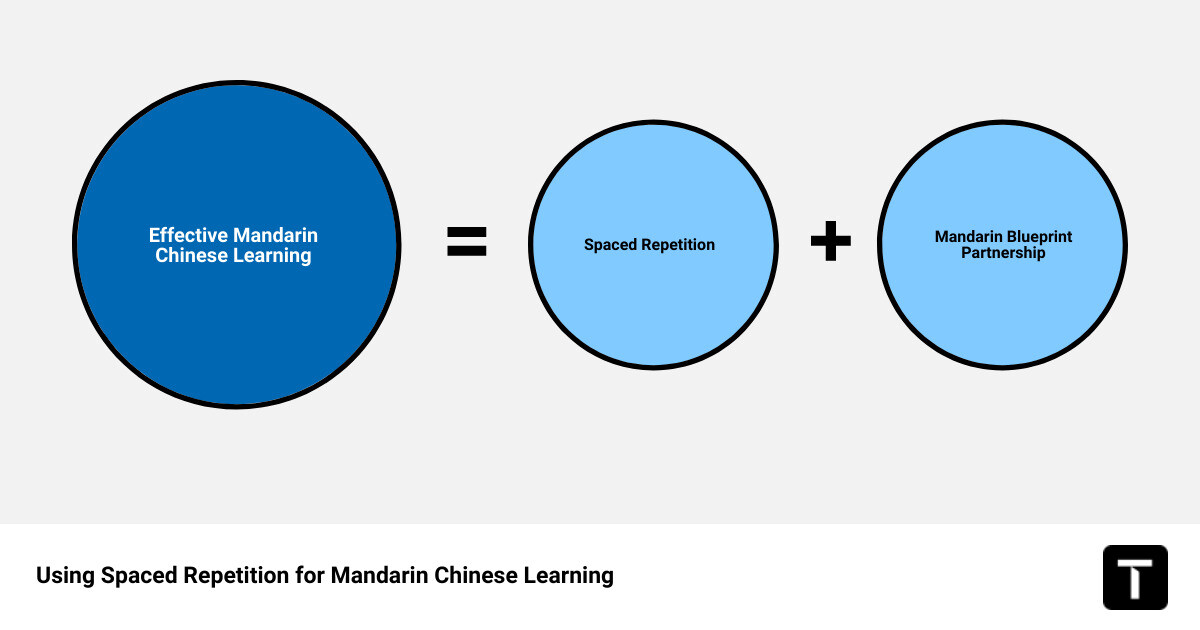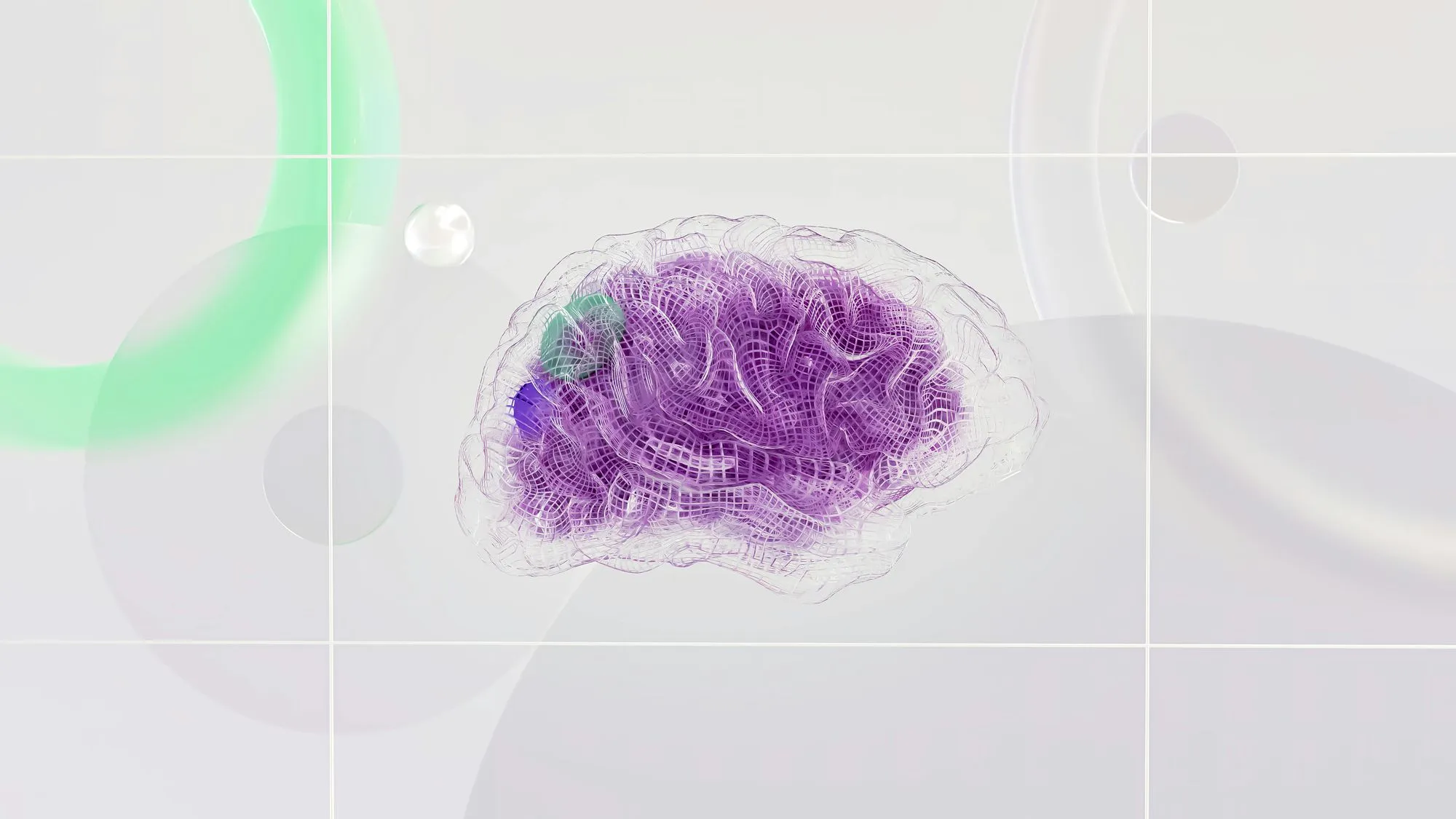Unlock the power of your brain with a technique that is as effective as it is simple: spaced repetition. This scientifically-backed learning strategy has gained traction among lifelong learners, educators, and cognitive scientists for its remarkable efficiency in enhancing long-term memory. For those on a mission to master Mandarin Chinese, or any other challenging subject, understanding the principles of spaced repetition could revolutionize your learning process.
Spaced repetition is about leveraging your brain's natural memory processes to learn and retain information more effectively. Think of it as a gym workout for your brain, where your mental muscles get stronger and sharper with each repetition. This workout is not just about the number of repetitions, but also about the timing. The strategic planning of review sessions to match your brain's 'forgetting curve' ensures that you remember more, forget less, and learn more efficiently.
In this article, we will take a deep dive into the concept of spaced repetition, its cognitive science basis, and its benefits for learning. We will also explore how you can incorporate this strategy into your own learning routine, and how technology, specifically the Traverse learning app, can help you harness the power of spaced repetition. Finally, we will discuss the application of spaced repetition in learning Mandarin Chinese, demonstrating how this technique can make the daunting task of memorizing thousands of characters a manageable and rewarding process.
So, whether you're an aspiring polyglot, a future mathematician, or someone who simply enjoys learning, we invite you to unlock your learning potential with the power of spaced repetition.
Understanding the Concept of Spaced Repetition
Imagine your brain as a muscle, getting stronger and sharper with every rep in the gym. In the realm of learning, this workout is known as spaced repetition, a scientifically-proven method designed to boost long-term memory retention.
The Science Behind Spaced Repetition
Spaced repetition was first proposed in the 1930s by Prof. C. A. Mace, who suggested that "acts of revision should be spaced in gradually increasing intervals." This was later reinforced by psychologist Hermann Ebbinghaus, who discovered what's now known as the Ebbinghaus Forgetting Curve.
This curve shows that without rehearsal, our memory of new information decreases exponentially over time. However, by revisiting the information at spaced intervals, we can "reset" this forgetting curve, making the decrease less significant and improving long-term memory retention.
The Role of Active Recall in Spaced Repetition
A key element of spaced repetition is active recall, a process that involves actively retrieving knowledge from your memory. This mental workout strengthens neural pathways, making our memory stronger and more efficient.
Research shows that active recall is significantly more effective than passive re-reading. In the context of spaced repetition, active recall is continually repeated at increasing intervals, helping to combat the forgetting curve.
The Spacing Effect and Its Impact on Learning
The backbone of spaced repetition is the spacing effect, a phenomenon where learning is more effective when it's spread out over time. Even fruit flies, when shocked by a specific odor at spaced-out intervals, learned to avoid it more effectively and for a longer period than when the shocks were delivered in quick succession.
For humans, the spacing effect helps us remember information more effectively. By spacing out the repetition of the same information, our brain perceives it as more important, aiding the formation and maintenance of long-term memories.
When applied to your learning routine, whether it's memorizing Chinese characters or understanding complex mathematical concepts, spaced repetition could revolutionize the way you acquire and retain new information. Armed with this knowledge, you're now ready to delve deeper into how to harness the power of spaced repetition in your learning journey.

The Benefits of Spaced Repetition for Learning
Spaced repetition is more than just a study hack. It's a scientifically grounded methodology that can transform your learning process. Here, we discuss the three key benefits of this approach: long-term retention of information, efficient studying in short bursts, and deep learning with minimal interruption.
Long-Term Retention of Information
Imagine not having to cram the night before a big test, or not forgetting the Mandarin characters you painstakingly learned just a few weeks ago. With spaced repetition, this is not only possible but expected. This technique leverages the spacing effect, a cognitive principle indicating that we learn more effectively when we space out our learning over time.
In essence, spaced repetition repeatedly exposes you to information at calculated intervals, preventing you from forgetting it. This system allows your brain to build more durable memories, which last longer. By reviewing the information just before you're likely to forget it, you reset the forgetting curve and make your memory stronger. Each review extends the duration the information stays in your memory.
Efficient Studying in Short Bursts
Spaced repetition is also about efficiency, making the most of your time and cognitive resources. Rather than trying to cram all information at once, you strategically plan your study sessions to match your brain's natural memory processes.
This approach introduces calculated intervals of forgetting, maximizing the principle of desirable difficulty. This concept suggests that a certain level of difficulty in retrieving a memory is actually beneficial for learning. The process of struggling to recall information strengthens the memory, making it easier to retrieve in the future. This reduces the time you spend relearning forgotten information and improves your ability to retain new information over the long term.
Deep Learning with Minimal Interruption
Finally, spaced repetition promotes deep learning and enhances long-term memory retention. It's not just about recalling facts for a test; it's about truly understanding the material and retaining it for a long time.
Spaced repetition ensures that new information is consolidated with related knowledge that has already been stored in your long-term memory. Over time, your brain begins to predict when it will next see the material and responds with greater alertness and attention, making it easier for information in that time frame to be encoded into long-term memory.
In conclusion, spaced repetition is a potent tool that can radically improve your learning experience. By fostering long-term information retention, enhancing studying efficiency, and promoting deep, uninterrupted learning, this technique can unlock your learning potential.
Implementing Spaced Repetition in Your Learning Routine
Unleashing the power of spaced repetition isn't rocket science. It's about putting the right strategies into practice, one of which is the creation of flashcards. Ready to step up your learning game? Let's dive in.
Creating Flashcards for Spaced Repetition
The humble flashcard is your secret weapon in the battle for knowledge retention. When you use flashcards, you're not just passively reading information; you're actively retrieving it from your memory. This process deepens your understanding, builds complex connections, and enhances learning far more effectively than simply re-reading information. Be it digital or physical, flashcards are the go-to method for spaced repetition learning. A tip for creating effective flashcards is to keep them concise and focused on a single piece of information. This way, you're making the most out of the active recall process, and minimizing cognitive overload.
Testing Yourself and Reviewing at Regular Intervals
A critical aspect of spaced repetition is self-testing at regular intervals. The timing of your study sessions is what makes spaced repetition effective. The optimal schedule suggested by research is to review the material 24 hours after the initial learning session, then a week later, followed by two weeks, a month, two months, five months, and finally a year later. That said, it's crucial to adapt these intervals based on the complexity of the information and your personal learning pace. The key is to stick to your schedule and trust in the process, despite any rough patches of difficulty remembering things.
Using the Leitner System for Spaced Repetition
The Leitner System, named after German science journalist Sebastian Leitner, is a simple yet powerful method to make spaced repetition even more effective. This system involves creating a set of flashcards and sorting them into boxes based on your familiarity with the information. If you correctly answer a flashcard, it moves to the next box with a longer review interval. If you answer incorrectly, the card goes back to the start for more frequent review. This ensures that you're reviewing challenging information more often and reinforcing the knowledge you've already mastered at spaced intervals.
In essence, implementing spaced repetition in your learning routine involves creating flashcards, testing yourself, reviewing at regular intervals, and utilizing the Leitner system. By understanding how to effectively use these strategies, you're already on your way to unlocking your learning potential.

Spaced Repetition and Technology: How Apps Can Help
If you're eager to transform your learning experience, it's time to embrace the digital age. Mobile applications have revolutionized our ability to learn efficiently and effectively, and spaced repetition is no exception. With various apps on the market, you can seamlessly integrate this proven learning strategy into your daily routine.
The Role of Apps in Spaced Repetition
Spaced repetition apps have made this powerful learning technique more accessible than ever, turning every setting into a potential learning space. Whether you're waiting for a Zoom meeting to start or commuting on a bus, these apps allow you to make the most of every moment. They utilize modern algorithms to optimize your study sessions, ensuring the most efficient learning and retention of information.
However, while these apps are excellent tools for memorization, they shouldn't be your only method of studying. Over-reliance can lead to a superficial understanding of the material and potential burnout from constant repetition. That's why it's essential to supplement these apps with other learning techniques, such as mind mapping and visual aids.
An Introduction to Traverse: A Learning App with Spaced Repetition
Now that we understand the value of apps in implementing spaced repetition, let's introduce Traverse, a standout app that leverages the power of this technique to help you master new information.
Traverse is a learning app that uses spaced repetition to enhance your learning experience. It harnesses the power of this scientifically-backed learning technique, making it more accessible and efficient for learners. The app is designed to optimize your study sessions, ensuring the most effective learning and retention of information.
Importing Anki Decks into Traverse for Continued Learning
One of the standout features of Traverse is its ability to allow importing Anki decks. If you're not familiar with Anki, it's another popular spaced repetition app known for its customizable features and adaptability of the SM-2 algorithm. Through importing Anki decks, Traverse provides a seamless transition for those who already have a collection of Anki flashcards, allowing you to continue your learning journey without missing a beat.
In the digital age we live in, apps like Traverse have emerged as powerful tools in making spaced repetition more accessible and efficient. The key to successful learning is a tool that combines this technique with a comprehensive approach to learning. By adhering to a balanced study routine and strategically using such apps, you can unlock your full potential in learning.

Using Spaced Repetition for Learning Mandarin Chinese
Are you ready to transform your Mandarin learning journey? Spaced repetition may be the key you've been searching for. Let's dive into how this powerful technique can help you master the thousands of characters that make up the Mandarin Chinese language.
The Benefits of Spaced Repetition for Language Learning
Mastering a language like Mandarin involves understanding and remembering thousands of unique characters, each with its own pronunciation, tone, and meaning. This can be an overwhelming task, but thanks to the science of learning, we've got a secret weapon on our side: spaced repetition.
Spaced repetition is particularly effective for language learning, specifically for Mandarin Chinese, a character-based language with an estimated 50,000 characters. By reviewing characters at strategic intervals, you reinforce your memory of them. The characters you find challenging will be reviewed more frequently, allowing you to focus your attention where it's needed most. Those you recall easily will be reviewed less often, freeing up your time and mental energy for more difficult content. This approach transforms the initially intimidating task of learning thousands of characters into a manageable one, securing these characters in your long-term memory.
Partnering with Mandarin Blueprint for Effective Learning
Spaced repetition isn't just about reviewing materials at the right intervals—it’s about using the right materials too. That’s where Mandarin Blueprint comes in. Through a unique partnership with Mandarin Blueprint, Traverse combines the power of spaced repetition with a comprehensive Mandarin course.
Mandarin Blueprint provides immersive course content that covers everything from basic vocabulary to complex sentences, while Traverse's spaced repetition system ensures that this knowledge sticks. The synergy between Traverse's spaced repetition and Mandarin Blueprint's course content equips learners with the tools and resources they need to master Chinese characters and achieve long-term proficiency in Mandarin.
Using Traverse for Mandarin Chinese Learning
Traverse is a learning platform equipped with advanced algorithms that adapt to your performance, scheduling reviews at the optimal time to aid retention. It's a cognitive science-driven tool that optimizes your Mandarin learning process by integrating mind mapping, visual mnemonics, and spaced repetition flashcards - three techniques known to significantly enhance memory and learning efficiency.
Leveraging the powerful spaced repetition feature of Traverse, you'll be reviewing the characters you find challenging more often, while the ones you find easy will be presented less frequently. This personalized approach makes your study sessions more effective and efficient, maximizing your effort.
Additionally, Traverse offers the ability to import your Anki decks, preserving your scheduling information and letting you continue your learning journey without any disruptions. This combination of a comprehensive curriculum with a personalized review schedule makes for a learning experience that is not just efficient, but also enjoyable and rewarding.
Harness the power of spaced repetition with Traverse and Mandarin Blueprint and unlock your potential in mastering Mandarin Chinese!
Conclusion: Unlocking Your Learning Potential with Spaced Repetition
As we've seen, the power of spaced repetition lies in its ability to enhance the long-term retention of information while optimizing your learning efficiency. This method is like a secret weapon in your learning arsenal, enabling you to unlock your full learning potential, whether it's mastering Mandarin Chinese or any other subject.
Spaced repetition leverages the science of memory and recall, using active recall and the spacing effect to ensure the information you learn is not easily forgotten. With this method, you're not just cramming for an exam; you're investing in lifelong knowledge that will stay with you far beyond the confines of a classroom or a textbook.
The beauty of spaced repetition is that it's not a one-size-fits-all approach. You can tailor your study sessions according to your schedule and learning pace. And the best part? It doesn't require marathon study sessions. In fact, it promotes efficient studying in short bursts, which means you can fit it into your busy schedule without feeling overwhelmed.
Technology, particularly learning apps like Traverse, have made it even easier to implement spaced repetition in your learning routine. With features like flashcard creation, timed review sessions, and the ability to import Anki decks, these apps are designed to make learning more manageable and enjoyable.
In the context of learning Mandarin Chinese, the benefits of spaced repetition are even more pronounced. With a language that includes thousands of unique characters, remembering each one can be a daunting task. But with spaced repetition, this task becomes infinitely more manageable. By partnering with Mandarin Blueprint, Traverse has made it possible to apply this effective learning method to the complex realm of Mandarin Chinese.
In conclusion, spaced repetition is more than just a study method—it's a transformative approach to learning that can help you master any subject. It's about making learning a part of your everyday life, not just something you do in preparation for an exam. By integrating spaced repetition into your study routine, you're not just learning—you're unlocking your full potential.
So, why wait? Start your journey with spaced repetition today and unlock the full potential of your learning capabilities!

